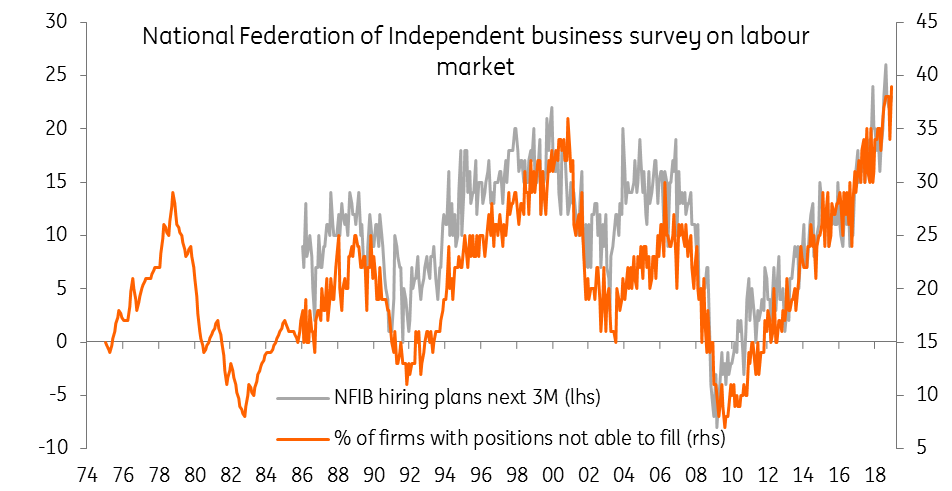US: What slowdown signals?
Wobbles in the equity market suggest a sense of unease regarding the outlook for the US economy. While there are certainly risks, there seems little prospect of an impending slowdown, particularly from the domestic side
After having expanded 4.2% annualised in 2Q18 and surveys, such as the Atlanta Fed NowGDP model suggesting the US economy performed just as well in 3Q18, financial markets are looking for signs that US economic activity will slow to a more “normal” rate in Q4. However, there seems little reason to expect that right now, especially from the domestic side of the equation.
Today’s University of Michigan consumer confidence index has held up well, dropping very modestly from 100.1 to 99.0. We suspect confidence will remain supported by the strong jobs market, gradual increases in wages and the ongoing support from the huge tax cuts that have come through this year. That said, the recent equity market wobble is something to watch while a renewed rise in gasoline prices and higher mortgage rates could also act as a partial brake.
So far we only have anecdotal evidence that firms are losing confidence and for now, the positives of tax cuts and strong economic momentum outweigh the trade impact
The effects of hurricanes Florence and Michael could also support economic activity in Q4 as the rebuild/clean-up operations in place stimulate more activity in the affected regions. Corporate profit growth is also strong, and investment is likely to remain firm. There is no evidence of a slowdown in labour hiring. In fact, it is the exact opposite with the National Federation of Independent Businesses reporting that the proportion of small firms who can’t fill vacancies and the proportion looking to raise compensation are both at record highs. This suggests wage growth will likely rise from here, further supporting economic activity.

Of course, there are threats
Tariffs and escalating protectionism risk disrupting supply chains, putting up costs and dampening sentiment and spending. However, so far we only have anecdotal evidence that firms are losing confidence and for now, the positives of tax cuts and strong economic momentum outweigh the trade impact.
Fed Chair Powell believes the impact of Fed policy on overseas economies is often “overstated” and this shouldn't hold policymakers back from implementing policies in the best interest of the US
Emerging market struggles are also a challenge if it dampens global demand and contributes to additional dollar strength. The concern here is that several key markets took advantage of being able to borrow cheaply in US dollars a few years back, but now that US interest rates and the dollar are on the rise they are feeling some pain. However, Fed Chair Jerome Powell believes that the impact of Fed policy on overseas economies is often “overstated” and this should not hold policymakers back from implementing policy that is in the best interest of the US.
Next week’s data flow should also support the view that the US economy will continue to outperform other major economies. Retail sales will be firm given we already know vehicle sales bounced strongly in September. Moreover, heavy discounting in clothing last month has been unwound, and we expect to see a stronger contribution from fashion. Industrial production too should be firm given the ISM manufacturing report remains at such strong levels, and the rising oil price is encouraging oil drilling.
We do expect US growth to slow next year as the fiscal tail winds fade and the effects of a stronger dollar and higher borrowing costs slow the pace of growth.
A spilt Congress after the mid-term elections will mean less prospect of additional fiscal stimulus while the trade and emerging market story may also act as a dampener on activity.
Nonetheless, we still think the US economy will expand by around 2.4% in 2019, and with core inflation and wages moving higher, the Federal Reserve will remain in tightening mode. We continue to look for a December interest rate rise from the Fed with three more hikes likely in 2019.
This publication has been prepared by ING solely for information purposes irrespective of a particular user's means, financial situation or investment objectives. The information does not constitute investment recommendation, and nor is it investment, legal or tax advice or an offer or solicitation to purchase or sell any financial instrument. Read more
